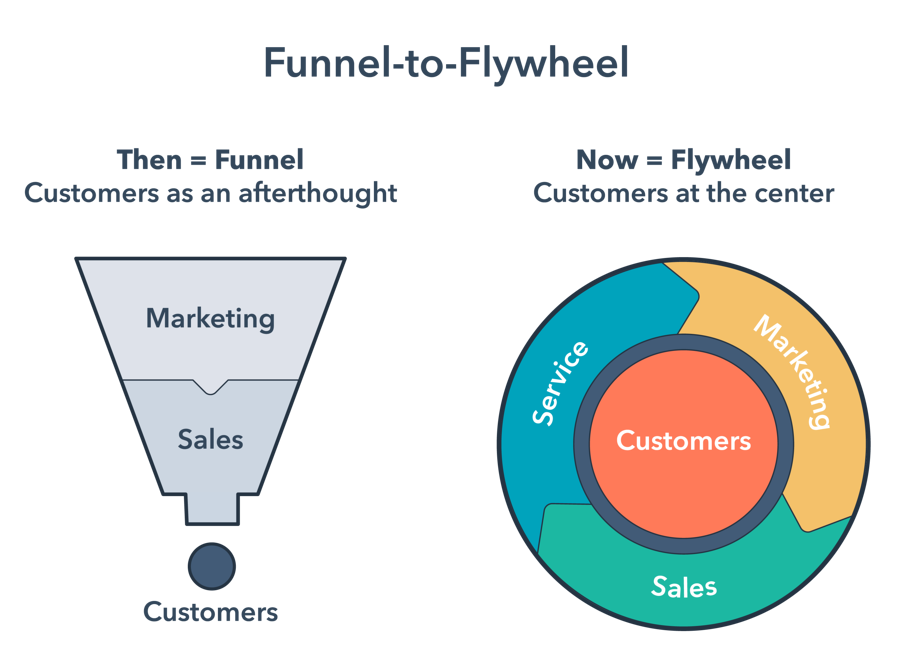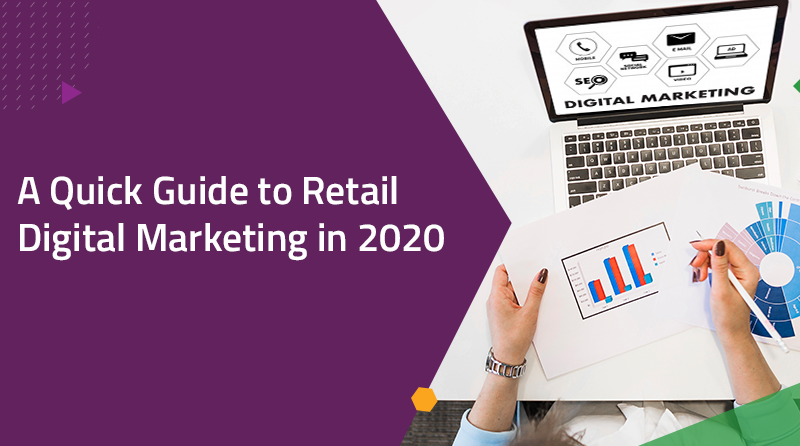This article was originally published at StraightArrow’s website
Along with the new year comes new strategies and trends to follow. And as someone looking to improve your digital marketing efforts, it’s important that you stay on top of the latest updates so you can apply them. Chances are you’ve stumbled across this blog because you’re looking to shed light on these, so we’ve got you covered! Read on to learn about a new structure that you can apply to your 2020 strategy.
From Digital Marketing Funnel to Flywheel
As a business owner in the retail industry, it’s likely that you’ve heard of the marketing funnel and are already following this model for your current strategies. This is understandable, especially since the funnel has proven itself useful to marketers and business owners for decades.
However, HubSpot—one of the leading marketing, sales, and CRM software available—said goodbye to the traditional marketing funnel and introduced the marketing flywheel just last year. This shift came right on the heels of research conducted in 2018, showing that customer referrals and word-of-mouth are now the largest influence in the purchase process.
You see, the marketing funnel’s approach makes it a good structure when you’re out to get new customers. But since the funnel is linear, the traditional approach lacks follow through after a sale has been made. This means that once customers reach the bottom of the funnel, businesses often fail to engage with them. This can mean missed opportunities for gathering potential customers.
Just to help you picture things more vividly, ask yourself: once your customers have added to their carts and received their orders, what’s the next step? How are you utilising your current client base to attract new prospects?
This is where the flywheel comes in.
A flywheel is a machine that captures, stores, and releases energy. And the amount of energy—also known as momentum—generated by the flywheel is dictated by how fast you spin it, the amount of friction, and the flywheel’s size.
- The speed of the flywheel refers to your efforts to increase customer success. Examples of this include optimising your website so it can guide them better or targeting your audience on social media so that only relevant product listings appear on their feed.
- Friction refers to obstacles a customer might face when they purchase from your store. This might come in the form of slow order confirmation or confusing buttons or conversion path on your website.
- Finally, the size of your funnel is dictated by your customer base. The bigger your customer base, the higher the likelihood for more referrals. More referrals mean more customers, which ultimately leads to gaining more momentum for your flywheel.
The flywheel model simply means that the customer is the priority. Customers feed growth, and your teams should align and work to minimise friction so that you ultimately gain even more momentum.
With the flywheel model, the customer journey does not end after the first transaction—the idea is that you can nurture them so that they become promoters for your product or service. This allows you to leverage the power of word-of-mouth marketing while boosting your digital marketing.

So what do you need to keep your flywheel moving?
Excited to adopt the flywheel for your strategies but not entirely sure how to start? Here are some digital marketing assets that will help you keep your flywheel spinning.
An optimised website
Your website serves as the online equivalent of your store and is a must for any digital marketing strategy. To gain more momentum for your flywheel, bear in mind that your website should be optimised for both searchability and user experience.
You need to make sure that your page is quick to load and responsive. According to Think With Google, 40% of consumers will leave a page if it takes longer than 3 seconds to load, while 79% of shoppers said they are less likely to buy from a site again if they’re dissatisfied with the web performance.
Remove points of friction from your flywheel by addressing bugs and other problems that might be slowing down your ecommerce site. Employ designs that are intuitive and user-centric to guide customers effectively from the first time they visit your website to when they’re finally ready to make a purchase. A great website encourages customers to come back and also to eventually give customer referrals.
A holistic digital marketing strategy
Your website is just one part of your whole digital marketing strategy. To keep your flywheel spinning at maximum speed so it can gain more energy, your marketing strategy needs to be holistic.
- Understand your customers. Know their demographics, goals, challenges, and pain points so you can provide value and solutions for them. Start by creating a buyer persona if you don’t have one yet. This serves as a semi-fictional representation of your prospects—you can base them on real people that you plan to reach out to or your current customer base.
- Craft educational content at every stage of your personas’ journey. This makes it easier for customers to learn more about your product or service as they make their way to a decision. Optimise your product listings to include complete and descriptive details. Outside your website, craft engaging social media posts or deploy automated personalised emails based on your prospect or customer’s actions to build a relationship and create recall.
- Delight your customers even after purchase. Give them limited offers, discounts, or referral bonus whenever they encourage someone to buy from you. This will make your customers as brand ambassadors and ultimately, will help you gain more momentum for your flywheel.
Gain momentum for your flywheel
Customers are people and they want to feel valued by the brand they’re supporting. By following the flywheel model, you’ll be able to structure your strategy in a more human and helpful way. This can increase customer delight and eventually help your retail business grow.
As we start this new and exciting decade, put your customers’ success at the heart of your strategies. Craft content that adds value to your personas, optimise your website for ease of experience, and reward your customers so that they are encouraged to advocate for your brand.
Finally, if you’re in need of help to step up your game to gain more momentum for your flywheel, there are solutions you can turn to. Utilise the means available today to make retail digital marketing easier for you this year.
Excited to learn more about how to keep your flywheel moving? StraightArrow can help. We provide holistic digital marketing support from website development to strategy execution and creative design! We also offer various packages that you can choose from based on your business needs. Whether you need full-time creative support or project-based engagement, we’ve got you covered. Click the button below to schedule a no-obligation consultation with StraightArrow.
Neima Chowdhury is a Content Marketing Associate at StraightArrow. She enjoys writing, listening to music, and watching random videos of pandas.



